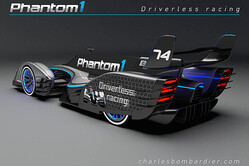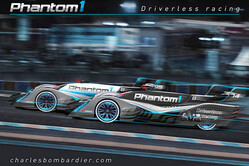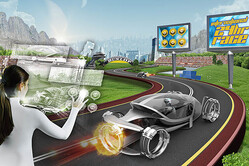


06/05/2014
NEWS STORY
 In the wake of Imola 1994, for many the first experience, courtesy of their TV sets, just how brutal and unforgiving Formula One can be, the sport went into overdrive in its efforts to ensure that such tragedy could never happen again.
In the wake of Imola 1994, for many the first experience, courtesy of their TV sets, just how brutal and unforgiving Formula One can be, the sport went into overdrive in its efforts to ensure that such tragedy could never happen again.
Though the powers that be can quite rightly point to the positives, the number of drivers who have survived far worse accidents and walked away, there were also some quite silly kneejerk reactions such was the desire to convince the wider public that F1 was safe and Imola was merely an aberration.
Such was the safety drive some opined that they remembered when "motor racing was dangerous and sex was safe...", the purists almost lamenting the dreadful days of the 50s, 60s and 70s when we were losing our heroes almost on a weekly basis.
As the cars became safer so too did the circuits, and as standard parts were introduced - more about money rather than safety to be honest - some claimed it was only a matter of time before drivers - in the name of safety - operated their cars by remote control.
At a time when the majority of Formula One testing is done in simulators and race drivers are entering the sport having gained their experience in racing games, the lines are becoming ever more blurred.
Now, Canadian industrial designer and entrepreneur Charles Bombardier, grandson of Joseph-Armand Bombardier, founder of Bombardier Inc. and inventor of the snowmobile, and whose previous projects include an all-terrain vehicle and ground effect cargo plane, has turned his attention to racing.
 "The Phantom 1 is a concept for a new era of motor sports, where full-scale driverless race cars powered by electric motors (or combustion engine) are driven remotely by gamers or by Racing Artificial intelligence (AI).
"The Phantom 1 is a concept for a new era of motor sports, where full-scale driverless race cars powered by electric motors (or combustion engine) are driven remotely by gamers or by Racing Artificial intelligence (AI).
"I've been thinking about driverless race cars for some time," says Bombardier. "I enjoy driving fast cars and follow racing for both the sport and the technology. However, as an engineer, I have also been thinking of a scenario where the pilot's life would not be in danger, yet the spectacle would remain the same.
"I am not proposing something to compete against traditional racing," he stresses, "rather a scenario that would complement the status quo .My scenario would be a driverless racing series where some cars would be remotely controlled by the best drivers in the world - think video game gods. In another category, Phantom 1 would be controlled by Racing Artificial Intelligence.
"The Phantom 1's body mixes Formula 1 and Le Mans prototypes to achieve an optimal aerodynamic efficiency," he continues. "The body could be very lean and low, and it would have enough space for efficient Lithium-Air battery packs. The weight target would be 1,250 pounds. The rear wheels would be covered, and the front and rear spoilers would adjust to adapt the aerodynamics of the car in real time. It would tilt up when braking, and tilt down when overtaking and going on straightaways.
"There would be two large LCD screen panels on each side of the car to showcase sponsors and rotate ads on the fly based on the target audience. Animated sponsor logos and motion graphics would be projected on them and also on the covered part where the driver used to be. LED stripes would be used on some body parts to make car look more aggressive and visually appealing. They could also change based on the car's racing strategy or technical condition.
"Much of the challenge to engineers creating F1 and Le Mans prototypes is the issue of driver safety. Being driverless, Phantom 1 would allow engineers to focus on outright technical performance without the same restrictions. This should allow for more rapid engineering and AI development.
"The Phantom 1 concept would let us push the cars to their limits without endangering the drivers. I would create an annual online competition open to everyone... the championship would be open to anybody with a computer. More exposure means more interest. I would also create races with no remote drivers, meaning an AI would drive the cars. This would improve the technology used in our cars, and it would translate into incredible competition between rivalling AI's."
 Interestingly, Bombardier's vision for the future of motor sport comes at a time when Dunlop, whose tyres won 81 rounds of the Formula One World Championship between 1950 and 1970 and between 1976 and 1977, has commissioned what it calls a Futurology Report in which renowned futurologist, Dr. Ian Pearson, has turned his attention to motor sport.
Interestingly, Bombardier's vision for the future of motor sport comes at a time when Dunlop, whose tyres won 81 rounds of the Formula One World Championship between 1950 and 1970 and between 1976 and 1977, has commissioned what it calls a Futurology Report in which renowned futurologist, Dr. Ian Pearson, has turned his attention to motor sport.
In his report, Pearson states that racing cars of years hence could have extremely powerful electric engines and linear induction plasma thrusters, as opposed to internal combustion engines. These thrusters would work by bombarding a gas with electrons, which would in turn create the plasma. Superconducting coils could then create large electromagnetic fields to propel it.
"Newton's laws of motion dictate that as the thruster fires a high-speed pulse out the rear end, the car gains equal forward momentum," says Pearson. "It isn't trivial engineering, and you would have to be careful about the power and direction of the jets, but this isn't just sci-fi. The military have already prototyped plasma rail guns that work well, and 125 years of development should easily bring this into the race-car technology arena."
Ultra-strong chassis materials, such as carbon nanotubes and graphene, could create great strength and rigidity at low weight; keeping future racing cars on track and helping to improve handling. Some could even change shape mid-race, allowing aerodynamics to vary on command. Engineers might use polymer gels that can contract like muscles and shape-memory alloys that ‘remember' their original, cold-forged shape: returning to it when heated. Future developments in either field could allow components to contract and expand, and engineers will be able to use these materials to design large changes of shape into body parts. "This would allow aerofoils to adjust their profile, or car body skirts to widen for cornering or to vary ground effect and lift on straight sections," adds Pearson.
Electronically controlled materials might also be built into racing tyres, according to the report, enabling variable grip and wear trade-offs. Polymer gels could easily make a short, fat component become a long, thin one. If millions of microscopic spikes were laid down using 3D printing during manufacture, then as the tyre wears, new layers could be brought to the surface. These could then be extended or retracted on demand: standing up to increase grip and folding flat to reduce drag.
"Imagine the spikes as miniature Eiffel Towers, if the base columns were to be squeezed together, you'd obviously expect the height to increase. At a scale from microns to millimetres, microstructures such as this would offer enormous potential for variable grip that could be precisely controlled at high speed."
The report also predicts that the introduction of android drivers could be necessary. "Imagine if the cars could accelerate and brake five times faster than today's top-tier open-wheel racers. The primary limitations will be human reaction times and physical limits, so we will also see android races," Pearson explained. "With full emotional capability, androids will have a strong will to win, coupled to superior reaction times and strength so could execute faster manoeuvres and make for even more compelling spectator events."
Augmented reality (AR) will become a strong part of everyday life in the future, according to the report. Video visors (such as Google Glass) already exist, overlaying computer-generated imagery onto the field of view. For motorsport spectators in the future this means one person might see one sponsor's name on a car, while the person next to them sees a different one, depending on their personal preferences.
AR would not only make racing cars look different to each individual viewer, but could also allow the spectators themselves to participate in races. If the technology were to converge with online computer gaming, it could allow people to drive virtually alongside real-life racers and other viewers, making the whole experience more immersive and exciting.
 "Some cars could be partly driven by teams of gamers, with an artificial intelligence (AI) autopilot providing a failsafe to protect other drivers. Just as gamers drive against computer-driven cars when they play racing games on a console today, high-tech versions of those driving programmes could control real cars on a race track. The AI could ensure that it doesn't cause a big danger of accidents, but gamers could account for at least some of the decisions," continued Pearson.
"Some cars could be partly driven by teams of gamers, with an artificial intelligence (AI) autopilot providing a failsafe to protect other drivers. Just as gamers drive against computer-driven cars when they play racing games on a console today, high-tech versions of those driving programmes could control real cars on a race track. The AI could ensure that it doesn't cause a big danger of accidents, but gamers could account for at least some of the decisions," continued Pearson.
‘Active skin' could also be developed over the next few decades. This will essentially be electronics printed directly onto the skin surface for medical monitoring and so on - but it could also link through to people's nerves. That would enable the recording and replay of sensory signals, thus letting viewers and spectators feel the physical sensations being experience by the drivers."
Only time will tell whose envisioning will prove the more accurate, Charles Bombardier or Dr Pearson, but it certainly gives room for thought.
And while race fans would dearly love to be able to compete with the very best drivers of the day surely even some team bosses must secretly relish the day when they can press a button or flick a switch without being told "tough luck!"
Chris Balfe